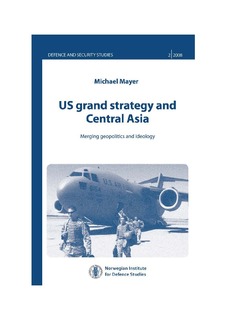| dc.description | After the demise of the Cold War, US strategic planning gradually adjusted to the new security environment, aiming to maintain its dominant global position while increasingly emphasizing regional security, governance issues and threats from non-state actors. The George W. Bush administration greatly accelerated these trends. US grand strategy today is one of global primacy, characterized by a dual focus on preventing the rise of any regional hegemonic powers while addressing regional security issues stemming from transnational and non-state threats. Current US grand strategy exhibits, as it has for decades, two fundamental components: geopolitical reasoning and ideological interests. The geographical focus of US strategy has gradually shifted to a broad arc stretching from Western Africa to Southeast Asia, an area rich in vital strategic resources and widespread political and social instability. Located at the center of this unstable arc, Central Asia contains many of the global challenges facing the US: regional powers, unstable and authoritarian states, energy resources, terrorism, proliferation threats and international criminal networks. With its regional strategy, the US seeks to shift the political center of gravity away from Russia and China by encouraging economic and political linkages between Central Asia and the region's southerly neighbors. This study reveals that the geopolitical and ideological elements in US strategy create both surprising synergies as well as classic conflicts of interest for policymakers. The challenges facing the US in Central Asia offer lessons for US strategy in other regions around the globe. | en_US |
